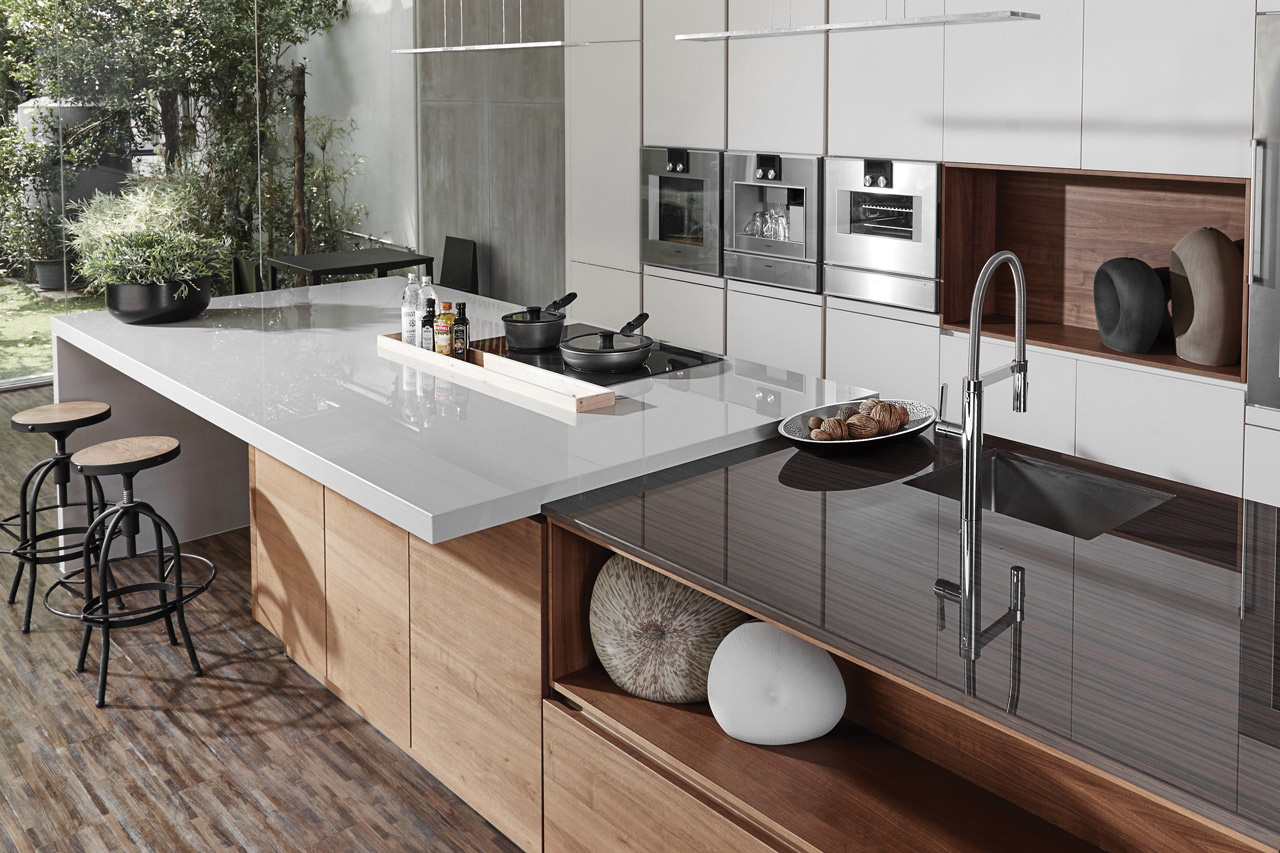Engineered quartz has been good to the stone processing market. It has undoubtedly given the sector a larger share of the kitchen worktop market than it could have achieved with natural granite alone. And, given that success, it is not surprising that other products have been developed with the aim of expanding the sector still further.
The highest profile of the new generation of sintered materials in stone fabrication have been Lapitec and Dekton, closely followed by Neolith from The Size. There are also a lot of porcelains. And a new material being called ‘Pyrolithic Stone’ from Thailand, is being launched at the Natural Stone Show in London (ExCeL London, 25-27 April).
The new material goes under the name of Geoluxe and is being sold in the UK by Stoneware Ltd near Bedford. Stoneware is a UK-based importer and distributor of ceramic and porcelain products, specialising in large formats for use in domestic and commercial projects.
Geoluxe is not printed on the surface like a ceramic or porcelain. It is made using what the maker describes as a patented ‘GeoMimicry’ technology that ‘overcomes imperfections of natural stones and most other surface materials’. It uses natural minerals so the veining goes right through it, as it does with natural stone, quartz and sintered products. It is sold in 20mm thick slabs of 3.2m x 1.4m, and 10mm thick tiles 1.2m x 600mm.
The more familiar Lapitec was developed by Italian machinery company Breton, which controlled the quartz market for many years because it developed, patented, made and sold the machinery used in the production of quartz. For a long time it limited the supply of machinery to one manufacturer in any given territory. Eventually others developed machinery for making quartz, especially in China.
With Lapitec, distributed in the UK by The Marble & Granite Centre just off the M25 at Rickmansworth, Breton decided to hang on to the technology it developed and manufacture the products itself, rather than selling the machinery for making the material. In any case, the production process involves hefty presses and furnaces that gives production the benefits of economies of scale.
New Lapitec colours for 2017 are Avana (a warm grey), Arabescato Bernini (a dappled grey with veining), Arabescato Canova (a white with directional grey veining).
Figurative materials are expected to continue to set the trend in worktops and Lapitec is experimenting with further possibilities in sintered stone.
As well as the colours, Lapitec has added new finishes – Dune and Lithos. Dune is a smooth textured surface in undulating patterns, much like sand dunes, and Lithos is a finely textured surface that replicates natural sandstone.
Breton’s main rival is the Spanish giant Cosentino, the maker of Silestone quartz. Its sintered product is Dekton, which it distributes along with its other ranges of natural and engineered stones from its own six depots in the UK (the sixth recently opened in Scotland, in Livingston, between Glasgow and Edinburgh), and to Ireland from its depot in Dublin.
The latest development from Dekton is the highly polished Xgloss.
Lapitec and Dekton both have their own networks of approved fabricators – The Marble & Granite Centre lately reached the 100 mark with its Lapitec network.
There are also new ways of using natural stone being developed. One of the reasons people have used stone effect porcelain for walls and floors is because it remains strong even though it is thin. Stone slabs and tiles often have a glass fibre backing on them to stabilise them during sawing and polishing and when being transported, but now a new, much stronger carbon fibre backing, originally developed for the concrete industry, is starting to make its way on to thin stone. It is said to give 10mm thick stone the strength of 30mm slabs, which makes it possible to use much larger pieces of thin stone for splashbacks, shower linings and even worktops.
Fabricators and installers appreciate the fact that although the carbon fibre is strong, no special tooling is required to cut and fabricate the material (unlike processing large format porcelain or sintered slabs, which have proved to be challenging and to require their own tools and skills to work).
Carbon fibre-backed stone can be cut using a standard segmented diamond blade like those typically used to cut 20mm or 30mm slabs, either mounted on a bridge saw or an angle grinder, along with a normal water feed. The material can also be processed in the normal way using waterjets or CNC workcentres.

